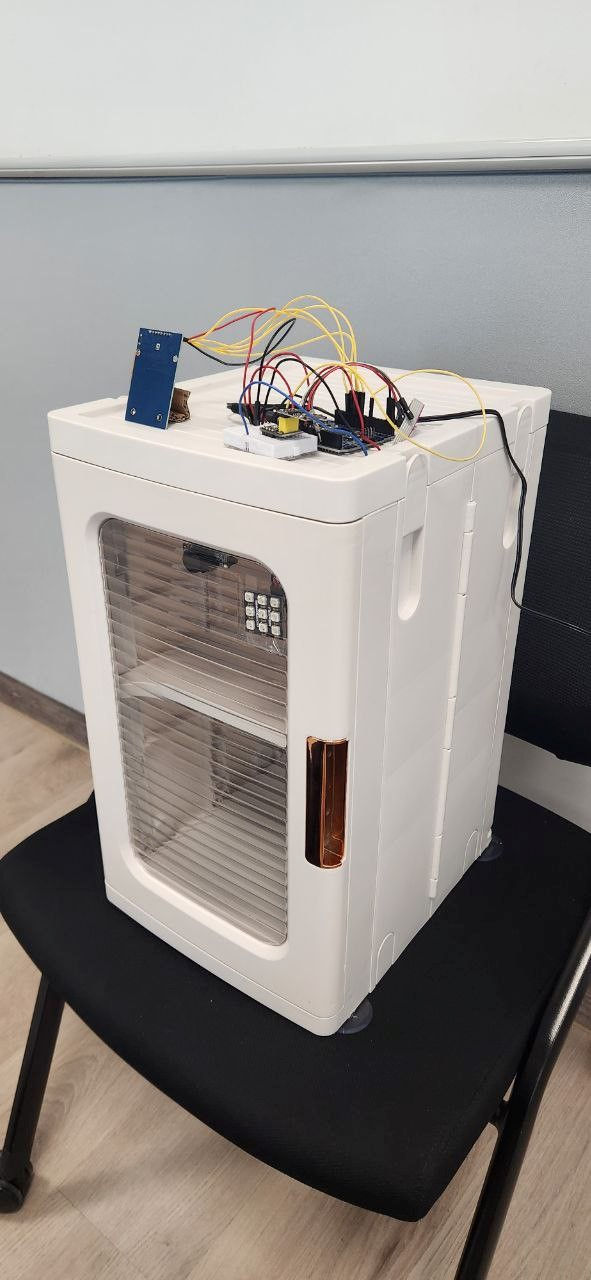Stakeholder Feedback
-
Does not account for the traceability of medication being placed / taken out from the medication box.
-
Need to get adherence from both the nurses and porters
Background
This project was undertaken in response to the James Dyson Award (Competition), which challenges university students to develop innovative solutions to real-world problems.
MediStation is a smart medication delivery box that uses RFID tags and staff ID scanning to automatically track when medications are placed into or removed from the box. An LED alert notifies nurses of new deliveries, and all activity is securely logged in real time to improve traceability, reduce errors, and protect nurses from unfair blame.
Scroll down to explore our project in detail, from the problem we tackled to the solution we designed.


Database Logger
To display the stored data from the database to see who took or placed medicine at what time as well as check for unauthorized user
Current Workflow

Improved Workflow
.jpg)
Why Healthcare Domain?
Tasked with developing an innovative, real-world solution for the James Dyson Award, our team began by exploring a range of domains to identify real-world challenges, inefficiencies, and opportunities for innovative design.
We evaluated and explored multiple domains by engaging in stakeholder research and assessing each domain based on factors such as user needs, feasibility, and innovation potential. While several domains were explored, a trade-off analysis revealed that many lacked the high-impact, user-centered innovation aligned with the James Dyson Award’s focus on practical and design-led solutions.
Our stakeholder interviews, particularly with frontline nurses, revealed critical pain points in hospital workflows. This led us to focus on the healthcare domain, where we identified strong potential for workflow automation and system improvements through human-centered design and innovation.
Problem Space
We initially identified three critical problems within the hospital environment after interviewing the stakeholders.
After conducting a trade-off analysis considering feasibility, impact, and innovation potential, we found that the medication traceability challenge best aligned with the James Dyson Award’s focus on user-centered, design-driven solutions.
This challenge involves the difficulty of accurately tracking medications from pharmacy to patient due to misplaced packages, lack of delivery traceability, and inefficient handover practices during shift changes. These issues compromise patient safety, increase nurse workload, and reduce accountability.
Stakeholder Needs
Following discussions with stakeholders, we identified their key needs.
-
Nurses require a more efficient medication retrieval process to reduce time spent searching for lost medication during shifts.
-
Clearer delivery accountability to prevent unfair blame on nurses for misplaced medications.
-
A notification to signal a new shipment of medication has arrived
-
Traceability of the status of medication
A smart medication drop-off bin designed to improve accountability and reduce misplaced medicines in hospital wards. The system uses an RFID scanner so nurses can scan their staff ID when placing or collecting medication. This logs who handled the medicine and when. A light indicator shows when medication has been placed inside the bin, making it easier for nurses to notice and collect it promptly. This setup enhances traceability, supports safer handovers, and reduce time spent searching for medication.
Initial Ideation: Medication Collection Bin
The system authenticates staff using RFID-enabled identification cards. When a porter taps their RFID identification card on the scanner, the medication box automatically unlocks, and the LED indicator turns green for 10 seconds signaling the allocated time for the porter to place the medication inside. After this period, the LED begins blinking to notify ward nurses that a new medication shipment has arrived. The blinking will stop only when a nurse taps their RFID card on the scanner to acknowledge receipt of the medication.
First Iteration
Second Iteration

The second iteration was a medication delivery box equipped with a barcode scanner and a LED alert. Staffs are required to manually scan each medication package’s barcode when placing it into or removing it from the box to create a record of transfers. A LED will start to blink to notify nurses when new deliveries arrived.
Stakeholder Feedback
-
Scanning barcode for each medication is not foolproof and inefficient
Third Iteration
.jpg)
For the third iteration, we have replaced the barcode scanner with a RFID reader to improve efficiency as the nurses and porter no longer need to scan the barcode of each individual medication package. Instead, it will be automatically scan when putting in or taking out the medication from the cabinet.
We have also added a locking mechanism to make the cabinet secure and only authorized personnel can open the smart cabinet after tapping their authorized ID card.
Our Team
We are a team of Robotics Systems Engineering (RSE) students from Singapore Institute of Technology, working together to apply our skills to real-world challenges. As aspiring engineers, we each bring unique strengths ranging from embedded systems and electronics to mechanical design, programming, and user research.
To explore our LinkedIn to learn more about our technical skills, and experiences, please click the respective link next to each team member’s role.
Chan Wei Jun
Mechanical Engineer
-
Created detailed 3D CAD models of mechanical components and assemblies using SolidWorks.
-
Generate initial sketches for mechanical systems
-
Iterated designs based on stakeholder feedback
Goh Ya Wen
Project Manager
-
Defined project timelines, milestones, and deliverables to ensure on-time execution
-
Maintained records of artefacts
Jamie Sim
Mechanical Engineer
-
Generate initial sketches for mechanical components
-
Fabricated the final prototype
Reginald Loo
Software Developer
-
Implemented algorithms to link RFID scanning, LED indicators, and data logging functions
-
Programmed conditional logic to detect medication access and trigger alerts if unverified access occurred
Muhammad Rusydi
Electronics Engineer
-
Designed the circuit for RFID scanning, LED notification, buzzer alerts, and ESP8266 for Wi-Fi logging.
-
Troubleshooting and Testing of circuit with implemented algorithms




